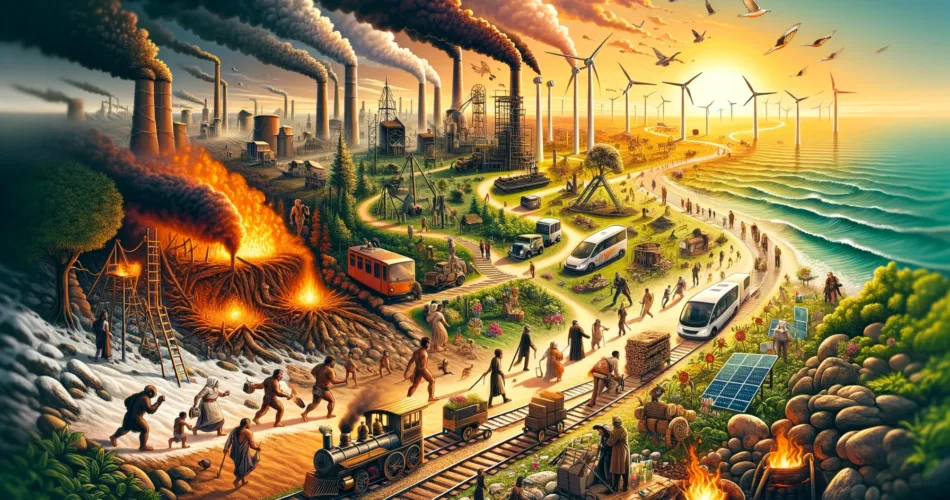In the pursuit of sustainable living and environmental preservation, humanity stands at a crossroads, exploring the depths of natural and scientific resources to find the “perfect energy.” This quest is not just a modern-day challenge but a journey that traces back to the dawn of civilization, marked by our ancestors’ discovery of fire and the subsequent evolution of energy sources that have powered societies through centuries.
The Evolution of Energy Consumption
The narrative of energy consumption is a tale of exponential growth and environmental impact. From the humble beginnings of using fire to the complex energy systems of today, humanity’s energy needs have skyrocketed, especially with the population boom and industrial advancements since the 1800s. This surge in energy demand brings us to the brink of a crucial question: How can we find an energy source that is both inexhaustible and kind to our planet?
The Criteria for Perfect Energy
The ideal energy source is one that is abundant, safe, and environmentally benign. It should be readily accessible, affordable, and capable of meeting our vast and varied demands without depleting the Earth’s resources or harming its ecosystems. From the perspectives of experts and laypeople alike, the perfect energy must be efficient, reliable, and, most importantly, sustainable in the long run.
The Nuclear Dilemma
Nuclear energy, with its high energy density, presents a paradox. It offers immense power from a relatively small amount of fuel, yet it carries the weight of risk, illustrated by the historical development and deployment of nuclear fission. The quest for nuclear fusion, on the other hand, symbolizes the hope for a cleaner, safer nuclear option, mirroring the energy production of the stars themselves.
Renewable Energy and the Sun’s Promise
Renewable energy sources, particularly solar energy, emerge as frontrunners in the race for perfect energy. The sun bombards our planet with far more power than we could ever hope to consume, presenting a virtually unlimited energy supply. Yet, the challenge lies in efficiently capturing and converting this solar bounty into usable energy, a task that science and technology are vigorously addressing through innovations like perovskites and advanced photovoltaic systems.
Geothermal Energy: Earth’s Inner Heat
Beyond the sun, the Earth itself offers a potent energy source through geothermal power. This energy, stemming from the planet’s formation and radioactive decay within its core, suggests another path to sustainability. However, the accessibility and potential of geothermal energy vary greatly across regions, highlighting the need for a diversified energy strategy that leverages multiple sources.
The Future of Energy: Fusion and Beyond
The ultimate dream of harnessing nuclear fusion, the process that powers the stars, stands as the pinnacle of perfect energy aspirations. Projects like ITER aim to replicate the conditions necessary for fusion on Earth, promising an abundant, clean energy future. However, the technical and financial hurdles ahead remind us that this goal, while tantalizingly within reach, still lies on the horizon.
Toward a Sustainable Energy Paradigm
The journey toward perfect energy is not solely a scientific or technological endeavor but a societal one, demanding a reevaluation of how we use and value energy. Reducing waste, improving efficiency, and prioritizing sustainability are essential steps on this path. The transition to renewable sources, coupled with responsible consumption practices, can lead us to a future where energy supports not just human prosperity but the health of our planet.

